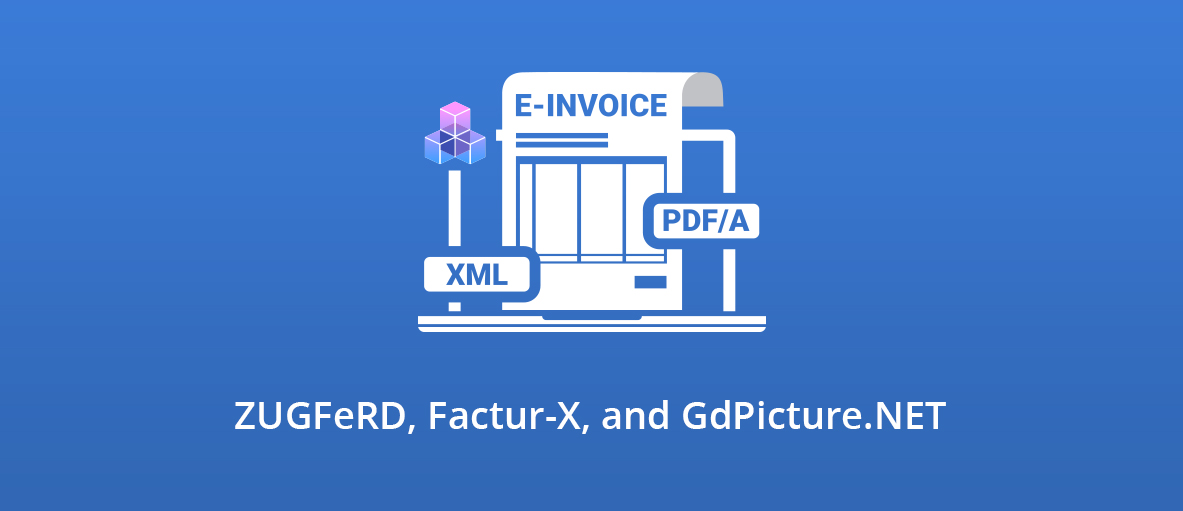ZUGFeRD and Factur-X – do you know these words?
They both represent standardized e-invoices formats used widely on the European market, especially in Germany and German-speaking countries for ZUGFeRD, and Germany and France for Factur-X.
If you are wondering, like one of our users:
“ I have an invoice as a PDF document and an XML document that describes that PDF. Is it possible to create a ZUGFeRD or Factur-X conform PDF document with GDPicture.NET? ”
The answer is simple: yes it is!
Now, let’s see more in detail what are ZUGFeRD and Factur-X, and how you can generate them with GdPicture.NET.
The answer is simple: yes it is!
Now, let’s see more in detail what are ZUGFeRD and Factur-X, and how you can generate them with GdPicture.NET.
E-invoicing
Electronic invoices move the world. They are part of the massive Electronic Data Interchange (EDI).
Each e-invoice is read, processed, and stored by a machine. To achieve this, standardization comes into play. E-invoices need to be in a standardly defined format easily recognizable by software applications. The EU norm for e-invoicing is called the European Standard EN 16931.
Hybrid e-invoice
For EDI implementation of e-invoices into the business, the paper invoice can’t only be scanned and stored. Scanned invoices are readable by humans.
On the contrary, the invoice data transformed into the standardized format for machine processing are not readable by a human at all. A combination of both these capabilities results in the so-called hybrid e-invoice. It is a combination of an original invoice, for example, a scanned paper, and invoice data itself in the standardized format prepared for automatization. The first one is in a standardized ISO PDF format conformed to PDF/A-3 and the second one is a structured XML file.
